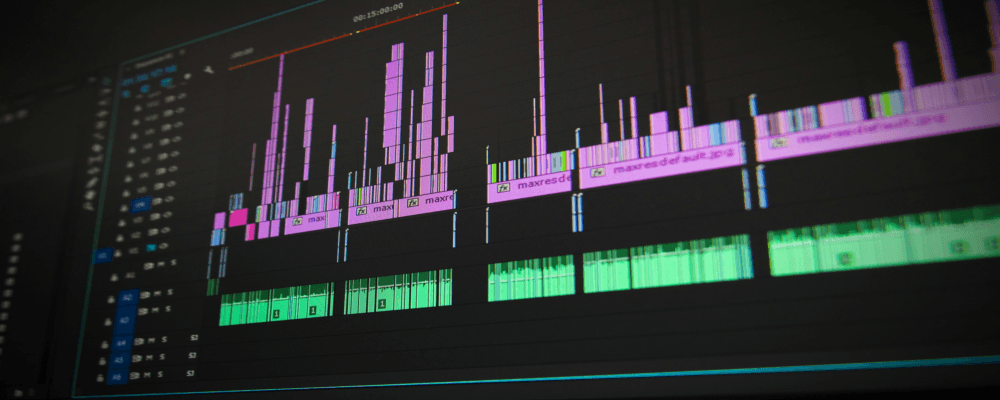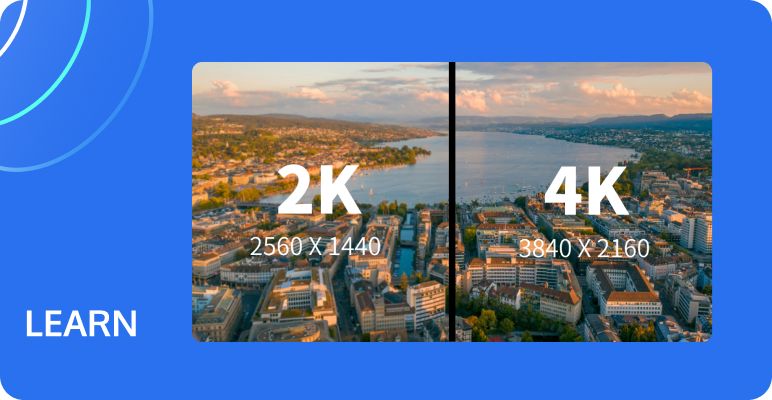SD vs HD? Helping You Make the Right Choice
What is SD?
SD stands for Standard Definition, which refers to video formats with lower resolutions, usually 480p and below. Common SD video resolution formats include:
- 240p: A resolution of 320x240 pixels, this is a very low resolution, suitable for slower network connections and older devices.
- 360p: A resolution of 640x360 pixels, this is a relatively common standard definition resolution, suitable for medium-speed network connections and general devices.
- 480p: A resolution of 640x480 pixels (NTSC standard), this is a relatively high standard definition resolution, suitable for faster network connections and better devices.
What is HD?
HD stands for High Definition, which refers to video resolutions higher than standard definition (SD), i.e., 720p and above. HD typically includes the following resolution formats:
- 720p: A resolution of 1280x720 pixels, also known as "standard high definition" or "HD Ready". 720p is a progressive scan format, meaning that all lines are updated each time the screen is refreshed.
- 1080p: A resolution of 1920x1080 pixels, also known as "Full High Definition" or "Full HD". 1080p is also a progressive scan format, offering higher resolution and clearer image quality.
- 1080i: Also 1920x1080 pixels, but unlike 1080p, 1080i images are transmitted in an interlaced scanning format, with each frame of 1080 lines scanned twice. In interlaced scanning images, it takes longer to see a complete frame than in progressive scanning images, and interlaced scanning images occupy less bandwidth. Currently, television companies mainly use 1080i video resolutions.
- 4K: A video resolution of 3840x2160 pixels.
- 8K: A video resolution of 7680x4320 pixels.

User's experience environment and expectations
When choosing between SD and HD, we need to understand the needs of our audience and what kind of experience they expect when browsing video content. Below, we list some user experience scenarios for different terminal environments and which resolution formats can be adapted to each.

Scenario examples - Adapt to SD
- Slow network speed: For users with limited network speed, only SD video can be experienced normally in a compromised scenario, while using HD video is almost impossible or very difficult to experience.
- Low-resolution devices: For devices with low resolution, such as old-fashioned TVs or low-resolution monitors, SD video is the only option due to resolution limitations.
- Limited storage space: SD video files are smaller and occupy less storage space; under performance constraints, only SD video can be chosen.
- Simple content: For some content (such as lectures, tutorials, or news reports) where image quality is not a high requirement, SD video is already clear enough.
Scenario examples - Adapt to HD
- High-resolution devices: For high-resolution devices, such as smartphones, tablets, or HDTVs, HD video can provide a better viewing experience.
- Fast network speed: For users with fast and stable network speeds, HD video can be played smoothly, providing higher image quality.
- High-quality content: For content with rich details and dynamic scenes (such as movies, TV shows, or sports events), HD video can better display image quality.
- Brand image: For corporate and brand promotion, using HD video can showcase a more professional image, enhancing user awareness and trust in the brand.
Limiting factors for video delivery platforms
After analyzing various situations of video audiences, what limiting factors should be considered for video delivery platforms? Let's list some issues that video delivery platforms may encounter when choosing between SD (Standard Definition) and HD (High Definition) videos.
- Bandwidth cost: Due to the higher resolution and bit rate of HD videos, they usually require more bandwidth for transmission and playback. Therefore, choosing HD videos may lead to higher bandwidth costs. Video delivery platforms need to assess their bandwidth budget and user demand for high-definition content to determine whether to provide HD videos.
- Storage cost: Compared to SD videos, HD video files are generally larger, requiring more storage space. Websites need to consider storage costs and ensure that there is enough storage space to accommodate high-definition content.
- Video encoding and compatibility: Different video encoding formats may affect the playback compatibility of videos. Websites need to choose a widely supported encoding format to ensure that most users can watch videos smoothly.
- Focus on visual experience or content: Although HD videos can provide better image quality, not all content requires high-definition quality. Websites need to decide whether to provide HD videos based on content type and target audience, balancing video quality and user experience.
SD or HD: Both need to be compatible
As a video delivery platform, we cannot solely choose to deliver SD or HD, as there is no absolute conclusion. Instead, we need to deliver SD or HD based on the real-time experience environment of different users. This depends on many factors, including user device performance, network conditions, content requirements, as well as the website's own storage and bandwidth costs. Users can choose the most suitable video quality according to their device performance and network conditions. For example, users with slower network speeds or lower device performance may choose SD videos to ensure smooth playback. On the other hand, users with faster network speeds, better device performance, or higher image quality requirements may choose HD videos for a better viewing experience.
In summary, video platforms should consider various factors when choosing between SD and HD and make timely adjustments based on changes in these factors. While taking into account their own platform capabilities, they should meet the needs of different users and provide the best user experience.
Compatible optimization strategy
Since we cannot choose to use SD or HD exclusively, what should we do to improve our delivery effectiveness if we are compatible with both SD and HD? Here are some strategies that websites usually need to implement to help video platforms improve the quality of the user's video experience.
Offer multiple resolution options and intelligently recommend suitable resolutions: Provide a variety of resolutions for users to choose from, such as SD (Standard Definition), HD (High Definition), and 4K (Ultra High Definition), and intelligently recognize the user's environment and recommend the best SD or HD resolution. The following information should be considered when recommending suitable resolutions:
- Network speed: Automatically select the appropriate resolution based on the user's real-time network speed. If the network speed is fast, the player will choose a higher resolution; otherwise, if the network speed is slow, the resolution will be reduced to ensure smooth video playback.
- Device screen resolution: The player will detect the user's device screen resolution to ensure that the selected resolution does not exceed the device's display capabilities, avoiding resource waste.
- Video source resolution: The player will consider the highest resolution of the video itself, avoiding the selection of options that exceed the video source resolution, which may affect the viewing experience.
Adaptive Bitrate Streaming (ABR): Implement adaptive bitrate streaming technology to adjust video quality in real-time based on the user's network speed and device performance, ensuring a smooth playback experience.
Optimize storage and transmission costs: Use efficient video encoding technologies (such as H.264 or VP9) to reduce the size of video files while maintaining image quality, reducing bandwidth and storage costs.
Retain user preference settings: Allow users to set their default video quality, such as SD or HD, so that their preferred quality is automatically selected when watching videos. At the same time, users can switch video quality at any time during the viewing process.
Data analysis and optimization: Continuously optimize video content, resolution, encoding, and transmission strategies by collecting and analyzing user viewing behavior, device information, and network conditions to improve user satisfaction and viewing duration.
Future changes, long-term choices
With the continuous development of technology and changes in user needs, the future trends of SD (Standard Definition) and HD (High Definition) will also change. Here are some possible trends:
- Widespread adoption of high-definition video: As high-definition display devices such as smartphones, tablets, and HDTVs become more popular, and network speeds improve, HD video will become increasingly favored by users. This may lead to SD video being gradually replaced by high-definition video.
- The rise of ultra-high-definition video: With the development of ultra-high-definition video technologies such as 4K and 8K, more users may switch to these higher-resolution video formats in the future. This will further promote the development of high-definition video, while the demand for SD video may further decrease.
- Improvement of adaptive streaming technology: Adaptive bitrate streaming (ABR) technology can adjust video quality in real-time based on user network speed and device performance. As this technology improves, more video websites and applications may adopt ABR technology in the future, allowing users to automatically obtain the best viewing experience without manually choosing between SD and HD.
- New video encoding technologies: With the emergence of new video encoding technologies (such as H.265/HEVC, AV1, etc.), future video files can maintain high image quality while having smaller file sizes and lower bandwidth requirements. This will help reduce video transmission and storage costs, further promoting the popularization of high-definition video.
- Development of virtual reality and augmented reality: With the development of virtual reality (VR) and augmented reality (AR) technologies, more video content may require higher resolution and image quality in the future. This will place higher demands on SD and HD videos and may even give birth to new video resolutions and formats.
In summary, the future trends of SD and HD may develop in the direction of widespread adoption of high-definition video, the rise of ultra-high-definition video, improvement of adaptive streaming technology, application of new video encoding technologies, and development of virtual reality and augmented reality. This will bring a better viewing experience for users and present new challenges and opportunities for video content providers and technology developers.

